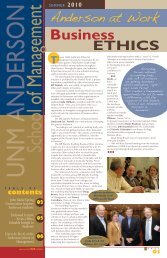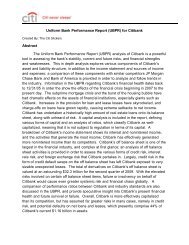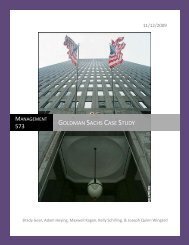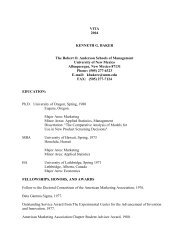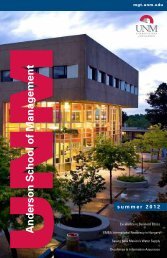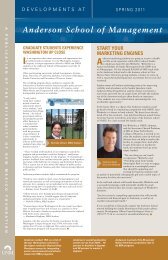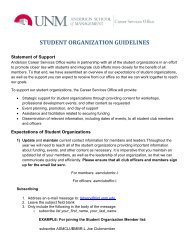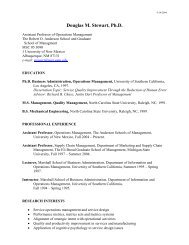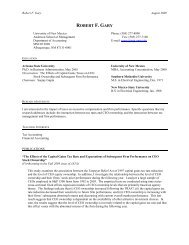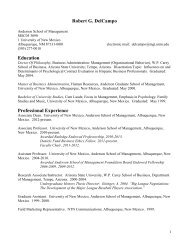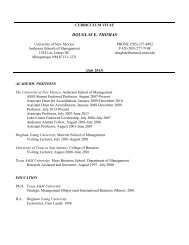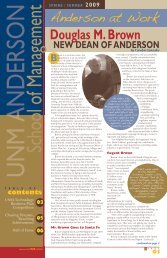Uniform Bank Performance Report - Anderson School of Management
Uniform Bank Performance Report - Anderson School of Management
Uniform Bank Performance Report - Anderson School of Management
Create successful ePaper yourself
Turn your PDF publications into a flip-book with our unique Google optimized e-Paper software.
A figure to consider when examining exposure to these kinds <strong>of</strong> risks in a bank is the beta <strong>of</strong> its stock.<br />
The stock <strong>of</strong> a bank represents the market’s opinion <strong>of</strong> its future value, and generally considers all<br />
aspects <strong>of</strong> its operations. Therefore, beta is a good indication <strong>of</strong> the extent to which a bank is<br />
susceptible to market risk. JPMC’s stock (JPM) has a beta <strong>of</strong> 1.2. This means that the stock price moves<br />
in positive correlation to the market at a factor <strong>of</strong> 1.2. This factor leads us to believe that JPMC is not<br />
excessively exposed to market risk. Nonetheless, the bank will have to manage this risk carefully through<br />
the manipulation <strong>of</strong> credit card rates, leverage ratios, derivative exposures, and interest rate margins.<br />
Analysis<br />
Analysis and Conclusion<br />
All aspects <strong>of</strong> the above report must be taken into consideration when judging the overall financial<br />
health and future pr<strong>of</strong>itability <strong>of</strong> JPMorgan Chase & Co. This section will provide an overall analysis <strong>of</strong><br />
crucial issues and their implications towards the financial health <strong>of</strong> JPMC.<br />
The acquisitions <strong>of</strong> Washington Mutual and Bear Stearns are very important factors to examine. With<br />
these acquisitions, JPMC attained billions <strong>of</strong> dollars worth <strong>of</strong> securitized assets and mortgage backed<br />
securities, many <strong>of</strong> which are still sitting on its balance sheet. These pose a major risk to the bank’s<br />
growth. Capital usually used to make loans is now being used to boost reserves for losses and writedowns<br />
on these assets. However, with these acquisitions, JPMC has also gained an enormous amount <strong>of</strong><br />
market share in the financial services industry. Since the end <strong>of</strong> 2007 JPMC has seen an increase in total<br />
assets <strong>of</strong> 26.61%. This should prove valuable in the bank’s effort to maintain its place among the big four<br />
banks.<br />
Evidence <strong>of</strong> JPMC’s relatively stable position maintained throughout the crisis can be seen by its<br />
disinterest in accepting TARP funds from the government. The fact that JPMC seemed to have been<br />
better prepared for the crisis than its competitors, tells us that JPMC was able to use the current system,<br />
and possibly its weaknesses, to its advantage. Increased regulation in the financial system will likely have<br />
the effect <strong>of</strong> making the banking industry a more even playing field, thus inhibiting JPMC’s ability to use



